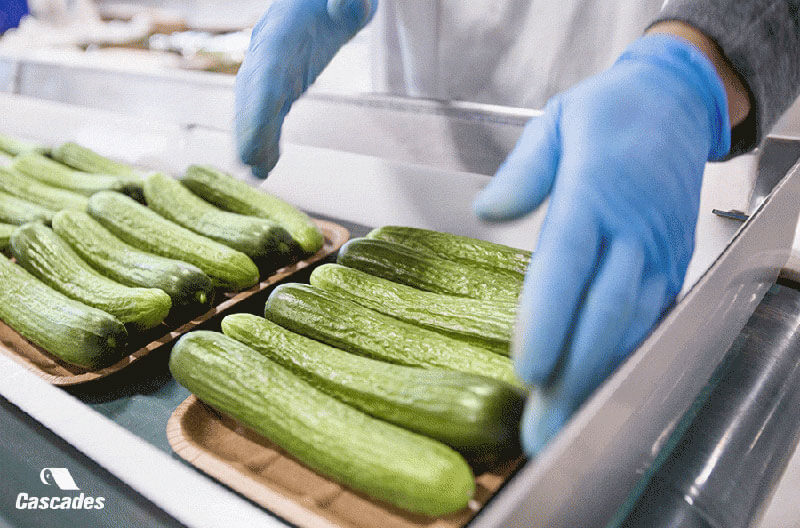Sponsored content
When an eco-responsible packaging choice becomes profitable
Case study: Toundra Greenhouse
Toundra Greenhouse is the largest producer of cucumbers in Quebec and offers a superior quality vegetable through environmentally friendly production. Located in a continental climate (Quebec, Canada), Toundra Greenhouse operates in highly technological facilities.
At Toundra Greenhouse, the desire to limit its environmental impact is manifested by, among other things:
• The recovery of rainwater and snowmelt. No drinking water from cities or from the water table is used.
• The reuse of hot water from a nearby factory to heat greenhouses.
• The use of a recovery system eliminating fertilizer discharges.
Toundra Greenhouse challenge: Finding a recyclable tray that meets its performance criteria.
In 2019, following its values in sustainable development, the Toundra Greenhouse team began looking for a packaging product to replace its polystyrene trays. The goal? To find a solution that would meet a series of criteria combining performance and respect for the environment.
Toundra Greenhouse selection criteria:
![]()
The team first turned to a tray made of molded pulp, known for its eco-friendly nature. However, the packaging proved to be ineffective at withstanding the moisture of the cucumbers. Only three days after its arrival at the point of sale, the container had lost its rigidity, leaving the consumer perplexed by the look of the packaging.
Toundra Greenhouse had no choice but to consider another solution.
The solution: Cascades’ cardboard tray
That’s when Cascades came on the scene with its 100 percent recycled, recyclable and compostable cardboard tray.
Unlike the previous packaging, the Cascades cardboard tray retains moisture perfectly, preserving its rigidity and the integrity of the cucumber for more than two weeks, at the point of sale. More good news is that this solution generates significant savings in the long run thanks to the elimination of losses during the assembly process.
“After a week of testing with the Cascades
tray, we knew we had found our solution.”
– Eric Dubé, CEO Toundra Greenhouse
A winning partnership 
The collaborative spirit and agile practices of the two companies made it possible to adjust the producer’s assembly line in less than four days, while minimizing the financial impact of this innovative transition.
“The Cascades team deploys its best specialists to optimize operations and reduce the impact of securing a new packaging solution. That’s our way of doing things,” says Jérôme Porlier, VP of operations at Cascades.
Brown is the new black
Toundra Greenhouse environmental concerns are shared by consumers more than ever. A survey of U.S. consumers confirms that 55 percent of them are extremely or very concerned about the environmental impact of product packaging.[1]
It’s not surprising that Toundra Greenhouse customers appreciate that the packaging is made of 100 percent recycled fibers and is recyclable/compostable. In fact, consumer surveys conducted by Cascades show that cardboard is perceived as more environmentally responsible than any other food packaging material.
“It’s hard to say that cardboard packaging alone
explains our sales growth, but I’m sure it allows us
to stand out from our competitors and
be favored by retailers.”
– Eric Dubé, CEO Toundra Greenhouse
Cascades sustainability experts analyzed the packaging choices of Toundra Greenhouse.
In 2020, the Cascades cardboard tray allowed Toundra Greenhouse to:
![]()
[1] Sustainability in packaging: Inside the minds of U.S. consumers, McKinsey & Company, October 21, 2020
[2] Based on the Life Cycle Assessment of the Cascades product (Ageco Group)
[3] Based on calculations from the Environmental Protection Agency

